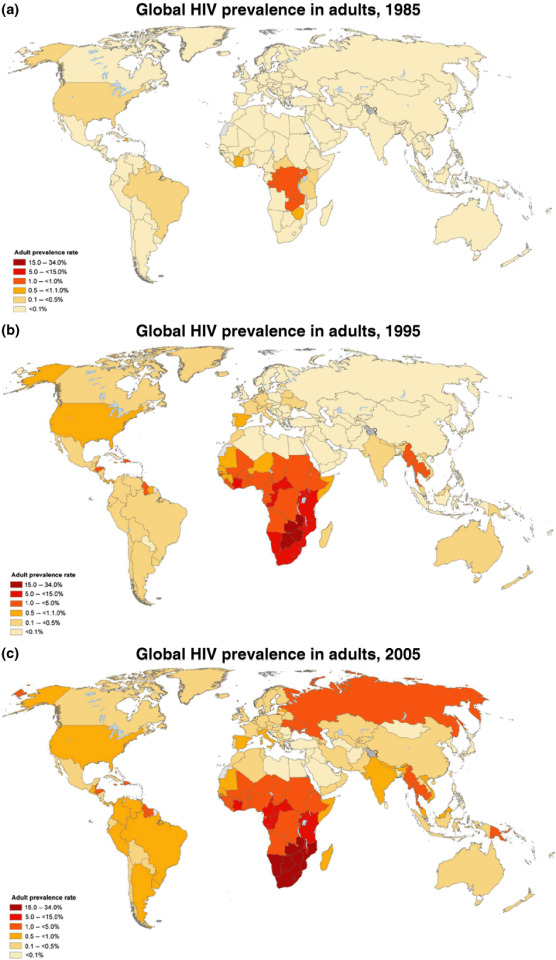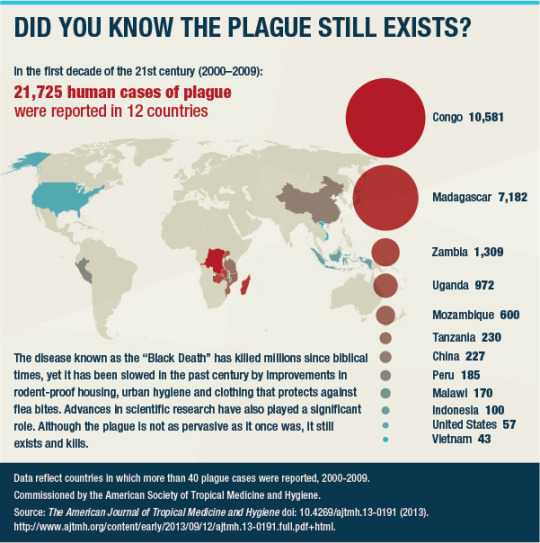#diseases
Text

#free palestine#free gaza#gaza#palestine#from the river to the sea palestine will be free#pray for palestine#genocide#flooding#disease#diseases#gaza strip#ethnic cleansing#israel#israel is a terrorist state#ceasefire#permanent ceasefire#humanitarian crisis#america#usa
34K notes
·
View notes
Text

Tetanus is no joke. If it doesn't get you, the muscle spasms are so bad they might just snap your spine. And guess what? There's not much you can do but wait for your nerves to fix themselves, which could take forever. Please, get vaccinated people!
The image featured above is a painting by Sir Charles Bell, a renowned Scottish surgeon and accomplished artist. These sketches have been commended for their insightful portrayal of the injuries soldiers endured in the 19th century.
223 notes
·
View notes
Text
🧬💉⚰️
#Covid#premature death#inoculation#animals injected with deadly mRNA#food#health#dna#crimes against humanity#these people are evil#health care workers#warning#danger#food hazards#crippling the natural immune system#diseases#speaktruth#corruption#fight for justice#standup#speak up#truth#please share#wwg1wga
347 notes
·
View notes
Note
Part 2 of New Year's Game: one of my friends took in a stray kitten and another went out to buy them supplies for it since they were too busy trying to get it clean and safe!
Okay, sorry about the delay, things have been a little busy over here!
Your good news for 2023 is this: A record number of countries eliminated diseases this year!
Egypt became the first country to eliminate hepatitis C
Bangladesh eliminated visceral leishmaniasis (black fever) and elephantiasis, Maldives interrupted Leprosy transmission, and North Korea eliminated rubella (along with Timor-Leste and Bhutan)! (x)
Niger eliminated river blindness
Benin, Mali, and Iraq eliminated trachoma (x)(x)
Ghana eliminated sleeping sickness
Azerbaijan, Tajikistan and Belize eliminated malaria
51 notes
·
View notes
Text
A whole new world of preserved #ancient human brains has been opened up in a new study. Recent findings reveal they're more preserved than we ever imagined.
32 notes
·
View notes
Text

Luke 4:40 (NKJV) -
When the sun was setting, all those who had any that were sick with various diseases brought them to Him; and He laid His hands on every one of them and healed them.
20 notes
·
View notes
Text

Ah yes.
My beloved son Kblthkpkthktpfgwpbgkpfthqwauthgkjggkfldlskpffftthhfgthtsqkthkwrghkkkkkkkkkkkkkttt.
He has every disease. (COLLECT THEM ALL!!!)
He actually kind of looks like Cthonaut A. (Only just)
#dougie rambles#personal stuff#my poor attempt at a joke#alien#hr giger#practical effects#space jockey#this sounded funnier in my head#shitpost#my son#he has every disease#nightmare fuel#the horrors#terrors#diseased#diseases#highbrow shitposting#what#no context#fucking hell#1979#alien 1979#incomprehensible#Cthonaut A#the monument mythos#mister manticore#analog horror#tangentially#engineer#special effects
38 notes
·
View notes
Text

The border surge has unleashed dangerous diseases on U.S. citizens.
Diseases like tuberculosis, chickenpox, polio, measles, malaria, leprosy, and even the dreaded Covid-19 are making their way into the country, brought in by the unchecked influx of immigrants. The Biden administration, however, seems to turn a blind eye to this impending disaster. Their immigration agenda remains indifferent to the harmful effects it has on the health and safety of U.S. citizens.
As these individuals pour across the border, they bring with them a myriad of dangerous diseases. Tuberculosis, a deadly respiratory illness, once again are becoming a rampant threat to public health. Chickenpox, a childhood disease that was once under control, is resurfacing in alarming numbers. Polio, a disease thought to be eradicated in the United States, finding its way back due to the lack of proper screening and vaccination protocols.
And let us not forget about the highly contagious measles, which is spreading like wildfire among vulnerable populations. Malaria, a disease transmitted by mosquitoes, is becoming an endemic in certain areas of the America. Leprosy, a debilitating condition that causes nerve damage and disfigurement, is also making an unfortunate comeback.
And lastly, the ongoing Covid-19 pandemic has demonstrated the catastrophic consequences of a failure to secure borders and enforce proper immigration protocols. Yet the Biden administration appears unconcerned about the potential for this virus to further ravage our nation. Their indifference is nothing short of alarming.
In the face of these threats, it is imperative that the Biden administration takes immediate action to address the potential health crisis at our borders. The safety and well-being of American citizens must be prioritized over political agendas. It is high time for our leaders to acknowledge the harmful effects their immigration policies are having on our nation and take decisive action to protect us all.
https://badbirdnews.com/the-border-surge-has-unleashed-dangerous-diseases-on-u-s-citizens/
13 notes
·
View notes
Text
if you get struck by lightning do you build a resistance against it like a disease
48 notes
·
View notes
Text
Autoimmune haver flags

flags for those with autoimmune disorders. exclusive to folks who have these conditions.
inspred by a request from @jananpa
transx/transid stay far away from my posts this content is not at all for you!

general flag


Addisons + Hashimotos


Addisons(left) <- a flag for those with addison's disease where the body is unable to generate enough of certain hormones from the adrenal glands.
Hashimotos(right) <- a flag for those with Hashimoto's thyroiditis, when the body's immune system creates antibody's that attack the cells within the thyroid.

Celiac + Dermatomyositis


Celiac(left) <- a flag for those with celiac disease, which is where the body reacts badly to digesting gluten by attacking the small intestine.
Dermatomyositis(right) <- a flag for those with Dermatomyositis which expresses symptoms similar to an allergic reaction where the body will develop rashes and swelling, including muscle weakness and trouble talking or swallowing.

Graves + Multiple Sclerosis


Graves(left) <- a flag for those with graves disease, an autoimmune disorder where the body can have a overactive thyroid or hyperthyroidism.
Multiple Sclerosis/MS(right) <- a flag for those with MS, where the body can develop a range of symptoms such as fatigue, walking issues, sexual dysfunction and so on all because the immune system starts attacking the brain and nerves.

Myasthenia Gravis + Pernicious Anemia


Myasthenia Gravis(left) <- a flag for those with Myasthenia gravis, where the body develops weakness in the skeletal muscles.
Pernicious Anemia(right) <- not to be confused with our other/general anemia flag, this is a flag for those who specifically have Pernicious anemia, where the body has developed a b12 deficiency and megaloblastic anemia.


[id: a green to white gradient box with a gif of candles and witchcraft tools on a shelf in the background and dark green text on top of the image reading "dni if transx/transid, radqueer, terf. more in pinned post. free to use/identify so long as you respect my boundaries. exclusive terms/flags are non-debatable". :end id]

#autoimmune#autoimmine disease#chronic illness#mod cass#flag design#flag blog#flag coining#my flags#flags for disabilities#flags for the physically disabled#disability#disability flags#chronic disability#disabled#disabilties#physical disability#flags for disorders#flags for physical disabilities#diseases#flags for diseases#multiple sclerosis#celiac#celiac disease#pernicious anemia#myasthenia gravis#graves disease#hypothyroidism#hashimotos disease#thyroid#dermatomyositis
36 notes
·
View notes
Text


#free palestine#gaza#palestine#free gaza#from the river to the sea palestine will be free#pray for palestine#🍉#contaminated water#clean water#water#humanitarian crisis#gaza strip#disease#diseases#israel#israel is committing genocide#genocide#ceasefire#permanent ceasefire#america#usa
4K notes
·
View notes
Text
🍔🤡☠️
#McDonald’s#food#fast food#health hazards#toxic#junk food#diseases#premature death#warning#danger#children#parents#save the children#standup#speak up#crimes against humanity#speaktruth#fight for justice#truth#please share#wwg1wga
276 notes
·
View notes
Photo

HIV Prevalence from 1985 to 2005.
172 notes
·
View notes
Text

#us politics#twitter#tweet#2022#@OneRadChee#conservatives#conservatives be like#republicans#republicans be like#trust the science#wash your hands#wash your damn hands#wear a mask#wear a damn mask#wear a fucking mask people#viruses#diseases#infectious diseases#public health
245 notes
·
View notes
Text
Unlocking mRNA’s cancer-fighting potential
New Post has been published on https://thedigitalinsider.com/unlocking-mrnas-cancer-fighting-potential/
Unlocking mRNA’s cancer-fighting potential


What if training your immune system to attack cancer cells was as easy as training it to fight Covid-19? Many people believe the technology behind some Covid-19 vaccines, messenger RNA, holds great promise for stimulating immune responses to cancer.
But using messenger RNA, or mRNA, to get the immune system to mount a prolonged and aggressive attack on cancer cells — while leaving healthy cells alone — has been a major challenge.
The MIT spinout Strand Therapeutics is attempting to solve that problem with an advanced class of mRNA molecules that are designed to sense what type of cells they encounter in the body and to express therapeutic proteins only once they have entered diseased cells.
“It’s about finding ways to deal with the signal-to-noise ratio, the signal being expression in the target tissue and the noise being expression in the nontarget tissue,” Strand CEO Jacob Becraft PhD ’19 explains. “Our technology amplifies the signal to express more proteins for longer while at the same time effectively eliminating the mRNA’s off-target expression.”
Strand is set to begin its first clinical trial in April, which is testing a proprietary, self-replicating mRNA molecule’s ability to express immune signals directly from a tumor, eliciting the immune system to attack and kill the tumor cells directly. It’s also being tested as a possible improvement for existing treatments to a number of solid tumors.
As they work to commercialize its early innovations, Strand’s team is continuing to add capabilities to what it calls its “programmable medicines,” improving mRNA molecules’ ability to sense their environment and generate potent, targeted responses where they’re needed most.
“Self-replicating mRNA was the first thing that we pioneered when we were at MIT and in the first couple years at Strand,” Becraft says. “Now we’ve also moved into approaches like circular mRNAs, which allow each molecule of mRNA to express more of a protein for longer, potentially for weeks at a time. And the bigger our cell-type specific datasets become, the better we are at differentiating cell types, which makes these molecules so targeted we can have a higher level of safety at higher doses and create stronger treatments.”
Making mRNA smarter
Becraft got his first taste of MIT as an undergraduate at the University of Illinois when he secured a summer internship in the lab of MIT Institute Professor Bob Langer.
“That’s where I learned how lab research could be translated into spinout companies,” Becraft recalls.
The experience left enough of an impression on Becraft that he returned to MIT the next fall to earn his PhD, where he worked in the Synthetic Biology Center under professor of bioengineering and electrical engineering and computer science Ron Weiss. During that time, he collaborated with postdoc Tasuku Kitada to create genetic “switches” that could control protein expression in cells.
Becraft and Kitada realized their research could be the foundation of a company around 2017 and started spending time in the Martin Trust Center for MIT Entrepreneurship. They also received support from MIT Sandbox and eventually worked with the Technology Licensing Office to establish Strand’s early intellectual property.
“We started by asking, where is the highest unmet need that also allows us to prove out the thesis of this technology? And where will this approach have therapeutic relevance that is a quantum leap forward from what anyone else is doing?” Becraft says. “The first place we looked was oncology.”
People have been working on cancer immunotherapy, which turns a patient’s immune system against cancer cells, for decades. Scientists in the field have developed drugs that produce some remarkable results in patients with aggressive, late-stage cancers. But most next-generation cancer immunotherapies are based on recombinant (lab-made) proteins that are difficult to deliver to specific targets in the body and don’t remain active for long enough to consistently create a durable response.
More recently, companies like Moderna, whose founders also include MIT alumni, have pioneered the use of mRNAs to create proteins in cells. But to date, those mRNA molecules have not been able to change behavior based on the type of cells they enter, and don’t last for very long in the body.
“If you’re trying to engage the immune system with a tumor cell, the mRNA needs to be expressing from the tumor cell itself, and it needs to be expressing over a long period of time,” Becraft says. “Those challenges are hard to overcome with the first generation of mRNA technologies.”
Strand has developed what it calls the world’s first mRNA programming language that allows the company to specify the tissues its mRNAs express proteins in.
“We built a database that says, ‘Here are all of the different cells that the mRNA could be delivered to, and here are all of their microRNA signatures,’ and then we use computational tools and machine learning to differentiate the cells,” Becraft explains. “For instance, I need to make sure that the messenger RNA turns off when it’s in the liver cell, and I need to make sure that it turns on when it’s in a tumor cell or a T-cell.”
Strand also uses techniques like mRNA self-replication to create more durable protein expression and immune responses.
“The first versions of mRNA therapeutics, like the Covid-19 vaccines, just recapitulate how our body’s natural mRNAs work,” Becraft explains. “Natural mRNAs last for a few days, maybe less, and they express a single protein. They have no context-dependent actions. That means wherever the mRNA is delivered, it’s only going to express a molecule for a short period of time. That’s perfect for a vaccine, but it’s much more limiting when you want to create a protein that’s actually engaging in a biological process, like activating an immune response against a tumor that could take many days or weeks.”
Technology with broad potential
Strand’s first clinical trial is targeting solid tumors like melanoma and triple-negative breast cancer. The company is also actively developing mRNA therapies that could be used to treat blood cancers.
“We’ll be expanding into new areas as we continue to de-risk the translation of the science and create new technologies,” Becraft says.
Strand plans to partner with large pharmaceutical companies as well as investors to continue developing drugs. Further down the line, the founders believe future versions of its mRNA therapies could be used to treat a broad range of diseases.
“Our thesis is: amplified expression in specific, programmed target cells for long periods of time,” Becraft says. “That approach can be utilized for [immunotherapies like] CAR T-cell therapy, both in oncology and autoimmune conditions. There are also many diseases that require cell-type specific delivery and expression of proteins in treatment, everything from kidney disease to types of liver disease. We can envision our technology being used for all of that.”
#Alumni/ae#approach#Behavior#bioengineering#Bioengineering and biotechnology#Biological engineering#Biology#blood#breast cancer#Cancer#cancer cells#cell#cell therapy#cell types#Cells#CEO#challenge#change#Companies#computer#Computer Science#covid#Database#datasets#deal#Disease#Diseases#drug development#drugs#easy
7 notes
·
View notes
